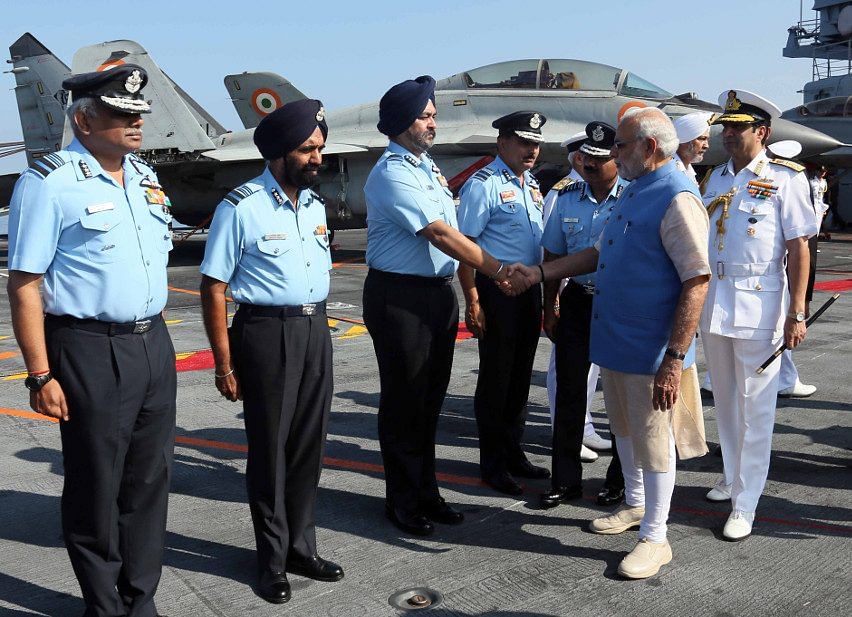A Navy officer has accused the IAF of stalling the formation of integrated commands – which is how most modern militaries function.
New Delhi: Soon after defence minister Nirmala Sitharaman said the government wanted the military to move towards creating theatre commands — integrated commands of the Army, Navy and Air Force that would subsume regional commands — a Navy officer went public with the turf war within the military that has stalled the idea so far.
Theatre commands are the way most modern militaries are structured: In China and Pakistan, the army is supreme and all other forces (such as the People’s Liberation Army Navy, or the PLA Air Force in China) are an extension of it. The US, the world’s largest military power, usually has a four-star Navy Admiral commanding its largest Pacific (now renamed Indo-Pacific) command.
Theatre commands have within them components of the Army, the Navy and the Air Force. The 2003 invasion of Iraq, for example, was led chiefly by the ‘Coalition Forces Land Component Command’ headquartered in Kuwait that reported to the central command in Doha, Qatar.
There is only one theatre command in India – ANC (Andaman and Nicobar).
Addressing a press conference Friday, Sitharaman gave an idea on how the government intends to go about. “We want a bottom-up approach, create the base and then add layers to it, that way it will not be top-down,” she said, adding that the “issue of jointness is very dear to Prime Minister Narendra Modi’s heart”.
Differences in the military
The Navy has put the Indian Air Force at the front and centre and accused it of stalling the creation of integrated commands.
Rear Admiral Monty Khanna, chief instructor (Navy) at the Defence Services Staff College has also insinuated in a paper at the Centre for Joint Warfare Studies that the IAF was not only opposing the forming of theatres but also stymieing debate on the subject.
“It is unfair to resort to finger-pointing and criticism without attempting to understand the underlying issues that have caused the IAF to so vehemently oppose theaterisation,” he writes in the paper titled The Indian Air Force and theaterisation – misplaced apprehensions.
Khanna then categorises the reasons for the IAF’s opposition in seven “arguments” —operational, resource, domain knowledge, historical, disruption, misplaced prioritisation, and “hidden”.
In his opinion, the IAF’s “hidden argument” is that it has five regional commanders-in-chief, while the Army has six and the Navy, three. Amalgamation of the forces could reduce the total number of operational commands from 14 today to about four joint commands. The IAF could lose the most in terms of senior command offices (all held by Air Marshals).
“This is the 800-pound gorilla in the room which often unites the three services in opposing theaterisation. Understandably, opposition from the IAF is most vehement,” writes Khanna.
But he says that HR (human resources issues like keeping avenues for promotions to senior ranks open) should not be linked to reforms. According to Khanna, reforms should be executed even if they disrupt the existing hierarchy and there is a threat of war during the implementation.
“By continuing to stress on a ‘do-it-alone’ command structure, the IAF has only harmed itself. It has resulted in a weakening of trust with the other two services who have attempted to resolve the issue by investing in integral air power,” he writes, meaning that the Army and the Navy have their own, expanding aviation wings.
